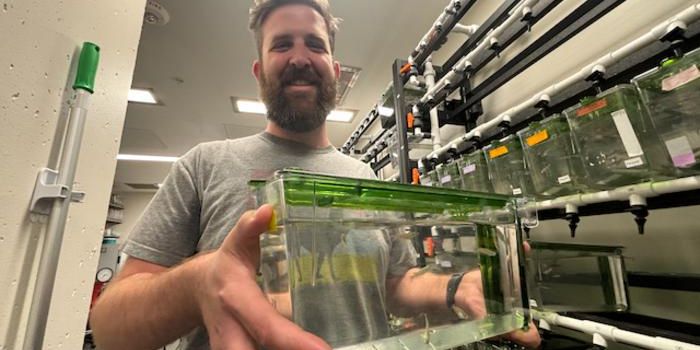When Proteins are Warmed to Body Temperature, They Change
Proteins are often studied at very low temperatures. In the case of cryo-electron microscopy, for example, proteins are frozen so they can be analyzed with powerful microscopes to learn more about their structure. But proteins also change shape when they are exposed to very cold temperatures. A new study has shown that when proteins are warmed up to a temperature like what is found in the body, their structures often shift in ways that reveal new places where drugs could potentially bind. The findings, which were reported in Nature, could have a dramatic impact in many fields, such as drug design and the study of protein interactions.
"For a long time, the methods we've used to study proteins require them to be cold or frozen. But in the real world, human proteins exist and function at body temperature," explained senior study author Juan Du, PhD, of the Van Andel Institute. "Our study describes a new way to study proteins at body temperature and reveals that some proteins drastically alter their structures when warm, opening up new opportunities for structure-guided drug development."
Proteins carry out many of the body's most essential functions. They might combine to create crucial macromolecular machines, work as enzymes that catalyze reactions, or interact with one another to send signals, such as when a ligand is bound to its receptor. These are just some of the many examples of what proteins can do, and their structure is often key to their function. When scientists are designing drugs that take aim at a specific target, that target is often a protein, so it is critical to understand how it is structured so that the drug will aim specifically for its target and fit with it perfectly.
While researchers know that proteins function at physiological temperatures in nature, studying them under those conditions in the laboratory is challenging. But this study has used one protein called TRPM4 as an example, and laid out a method for investigating proteins as they exist at body temperature.
Previous work has linked TRPM4 to a variety of health conditions, including diabetes, heart disease, and stroke. It works to support the function of the heart and aid in metabolic functions.
The investigators used cryo-electron microscopes in this study, but instead of freezing their samples at the start, the researchers heated them up to body temperature, then instantly froze the samples so they could then be analyzed. This effort showed that molecules attach to TRPM4 in totally different places when they exist at body temperature, compared to the binding sites that have been identified when the protein has been analyzed at much lower temperatures.
As such, the study authors suggested that these conclusions could have far-reaching implications for many other proteins and how their interact with their partners.
Sources: Van Andel Institute, Nature




















































